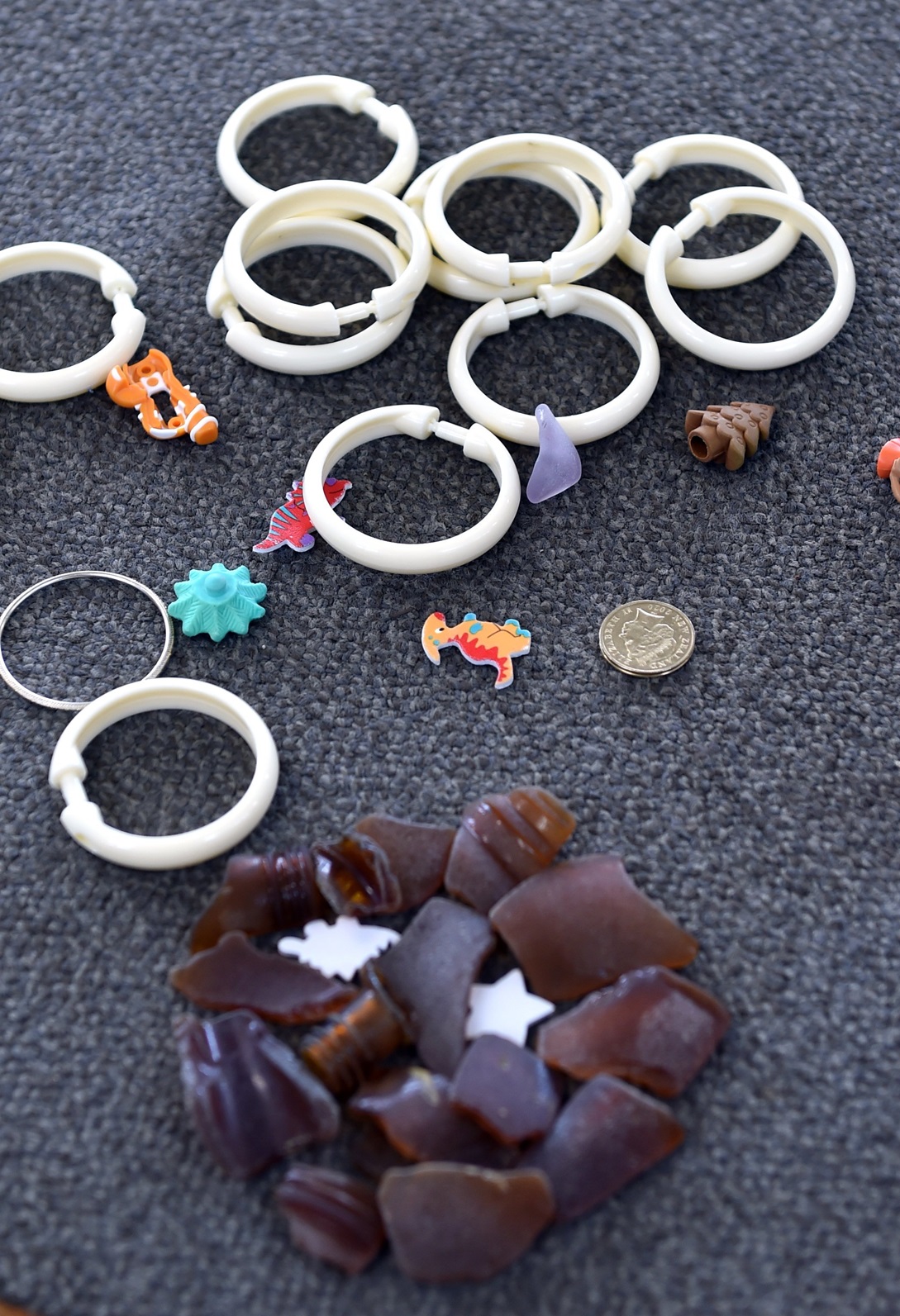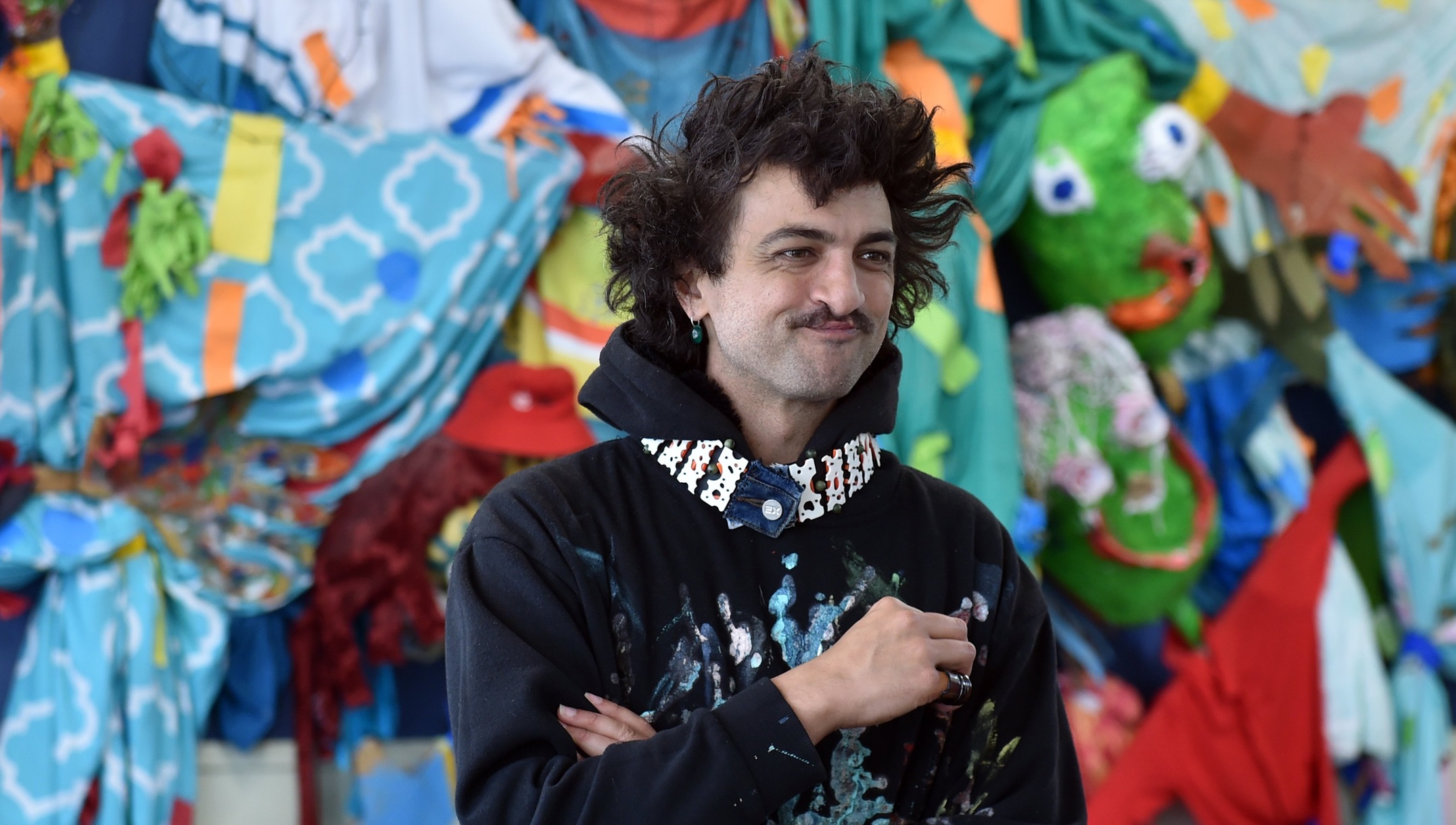
It looks like Beau Cotton is wearing the broken neck of a beer bottle on his finger.
He pulls the "ring" off to show me, explaining how he found it outside a Turkish restaurant 15 years ago in Hamilton. It remains one of his "favourite things ever because it’s unique".
"This is a great example of my work, of finding things and then elevating them to become wearable, basically."
Cotton describes himself as a found-object sculpture artist who discovered his penchant for finding "treasures" growing up on Waiheke Island, where he spent hours in the bush collecting things that caught his eye — twigs, shells, rocks, bits of wire — and taking them home to display in his bedroom.
Inspired by the cartoons he was watching, in which the characters had all manner of gadgets and weapons that Cotton thought were cool, he started making those things from his treasures.

"I just kind of put two and two together and went, this must be either fashion, art, or something."
Cotton started out thinking fashion would be his career path. He went to England where he studied fashion.
"It turned out I hated making clothes. I realised very quickly I was looking for something that was more than just something that is thrown away."
So he turned to art. He returned home to New Zealand and began art school in Tauranga before finishing his degree at Wintec in Hamilton, focusing on sculpture.
"I’d had enough of the institution by that point to kind of realise I don't need to be a student, just flogging myself with essays and academic stuff, I'd rather just be making."

"It's connected to trauma and change and so I was finding my work within sculpture just stuffy, and I needed something new."
In 2021 he crossed over into making jewellery from found objects.
"Jewellery allowed me to see the body as, basically, the display platform. And the beautiful thing about jewellery is it's not fashion, so it's not a full look, you know — it's just a very precious thing."
He loves how jewellery draws people in for that second or third or fourth look.
"The preciousness basically is kind of what I love about jewellery."

"I'll find pearl necklaces, real pearl necklaces, and break them up and make them into something, and I love the thought that like 100 years from now or even 50 years from now somebody acquires my work and possibly does the same to my work to make, to create, a new conversation, re-using the materials."
Cotton also loves the flexibility of jewellery, using his bottleneck ring as an example.
"This bottleneck beyond this, it can be a scarf pin, you know, it can be so many other things — it could be incorporated into a sculpture, it's a sculpture in itself."
His most recent work includes a coronet, which is essentially halfway between a grand crown and a tiara. Rather than precious metal and stones, it is made from the inseam of a pair of denim jeans, with garden netting holding former chandelier crystals, laced together with a pair of old Doc Martin laces and a skipping rope that has been cut up and repurposed as its peaks.
"There is a beautiful collection of carnelian gemstones that a very good friend gave to me that are its sparkly aspect, and it’s finished off with black ebony wood beads."
Another piece is a choker made from upcycled ivory piano keys. He acknowledges the use of ivory is a charged topic, but he believes in not wasting material, even that which is illegal to take these days.

Colour is brought to the piece by red edge trimmer blades and pounamu beads, which are all tied together with an old seatbelt.
"I have to really connect with what I'm making. I don't make two or three of things, I only ever make one of things. In order for jewellery to pass for me, I have to be able to look at it and say, ‘do I myself love this?’ and if the answer's yes, then it will be in the world. If it's good enough for me, then it's good enough for everyone else, that's the first and the simplest test."
He likes how his work creates talking points for people, such as matching the ivory — with all its connotations — with the New Zealand pounamu beads.
"What do these layers of things encourage us to think about? I'm not here to say what that thing is, I'm just here to kind of go ‘these things are really cool, beautiful and interesting, some of them have a charged history, some of them don't’."
In creating his pieces, Cotton is learning new skills all the time. He has not had any jewellery training, but has found Dunedin’s jewellers to be generous with their time and equipment.
"I still don’t know metalsmithing yet or any of that sort of craft, but that will come. I’m not in any rush to learn things."

"Because in Dunedin we're just surrounded by so much goodness you can't not find things, you know."
Cotton came to Dunedin on the urging of friends he used to live with in Tauranga and has had no regrets, finding the tempo of the city just his pace.
"It’s really awesome down here. The buildings, the age, and the Victorian kind of vibe of this place as well, and the fact that Dunedin really covets black, and that's another really interesting talking point in itself."
The people also remind him of the same sort of community he had growing up on Waiheke, where people were interested in what others were doing.
"I love that people here always ask me, ‘Beau, how's your art going?’ The people are just that extra cherry on top that just makes it sweeter and makes for a better experience."
Getting the West Harbour artist’s residency is thus really special for him, and he is looking forward to working with the area’s school children.

"I’m really excited. I’ve made the kids, out of denim, little pouches that they can wear around their neck when they go in the world and collect treasures."
Then they will look at what they have collected, talk about their finds and then apply simple jewellery techniques to make a necklace.
"They’ll make interesting, beautiful compositions from the things they find."
Wanting the children to have the full experience of exhibiting in a white gallery space, he has organised for their work to be displayed at fellow artist Eliza Glyn’s studio in Port Chalmers, as well as at the school alongside his own work at the end of the residency.
TO SEE
Exhibition and celebration, Port Chalmers School hall, November 23, noon-2pm. Exhibition at Eliza Glyn Studio November 29-30.














